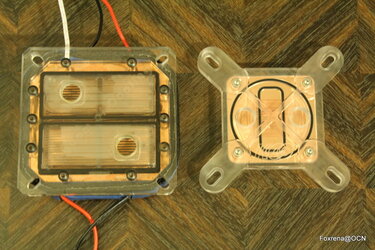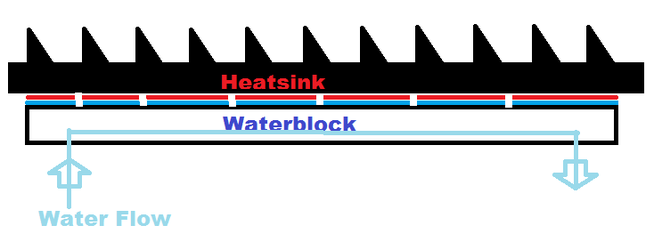Please excuse me if you've already given this information, I speed-read the thread and didn't see it.
I'm feeling vaguely inspired at the moment for some reason and am full of ideas, but first I need to know:
1) How much below ambient are you looking for?
1.1) Would at ambient work for you?
1.2) Are you willing to gunk your motherboard/GPU/GPU/etc. up with vaseline for wetness protection?
2) What all are you hoping to cool? CPU? GPU? RAM? All of the above?
2.1) Exact model numbers are needed (4770k? 4570k? G930? etc.)
2.2) How much OCing are you planning here?
3) What PSU do you have?
4) What's your budget?
5) How much ongoing power consumption are you willing to deal with? (I realize this is a difficult thing to come up with a number for, probably the best way to answer it is in $/month of power. I'll need your kWh costs too if you go that route)
6) How much DIY are you willing to do?
6.1) If limited, how much are you willing to pay someone to do things (like, say, active temperature management for the coolant) for you?
7) What's the weight limit, if there is one?
1-1.1 - I'm not all that interested in achieveing temps far below ambient. I think a couple degrees below ambient would be the most I care to achieve and even then I would probably only ever try that for benchmarking. Right around ambient or a little above is how I would want to run it normally.
1.2 - I am willing to use vaseline but I hope to use a more permanent and less messy type of solution after I get it working. I have some ideas but I would have to test them to find out if they are plausible.
2 - I haven't considered cooling more than a CPU so far. I don't know if cooling all of the parts that are normally included in a liquid loop is really possible with the rig I have in mind at least not while still achieving temperatures near ambient.
2.1 - I think if this were going to be used practically I would be using it as an HTPC mostly. The fact that I don't have the time or desire to start on this thing any time soon means I don't think any current CPU models are going to make sense to consider. That being said I don't know which CPU I might use but I guess it will be something on the 'lower end of the upper end', maybe something like an i5 4200.
2.2 - Overclocking depends on how high I have to rev the rig up to keep the temps down. Basically I would want to keep the clock speeds at a level that would still allow me to keep the temps near ambient without using any fans. It might even turn out that I would have to underclock the CPU to get that. I hope not and I don't think it's very likely to turn out that way. In any case, I prrobably wouldn't overclock more than 8% or 10% except for testing and benchmarking.
3 - I don't have a PSU that I plan to use nor do I have a specific model in mind. That's something I'll decide when/if the time comes. If I had to tell you how I think it will work I'd say I will probably use a run of the mill 600-700 watt 80+ bronze modular PSU, as well as an external industrial power supply, and some kind of dev board for control, for the peltiers and any other auxilliary equipment.
4 - I don't have any specific amount of money I am willing to spend or not spend. I don't think it's a project that would cost a huge amount of money. I would think it can be done for $2,000USD on the low end.
5 - There's no getting around the fact that it's going to take a lot of energy to achieve what I have in mind. Again, I can't give you a relevant number because there is so much that I haven't even tried to figure out at this point. I would like to keep it below about 2,000 average watts but who knows how close Ican actually come to that...
6 - The point of doing the thing is to do the thing myself. I would only pay someone to do something for me in the event that I couldn't do it myself. Aside from not owning certain equipement like a cnc laser or a milling machine I can do everything in mind myself. There are always unexpected problems with this kind of thing so I can't say for sure just how much of it I'll need help with.
7 - No practical weight limit. I don't want to use 300 pound copper billets or 40 gallon tanks of water but that much is obvious due to the nature of the rig. What I mean is that the kind of thing I have in mind will naturally come in at an acceptable weight.


